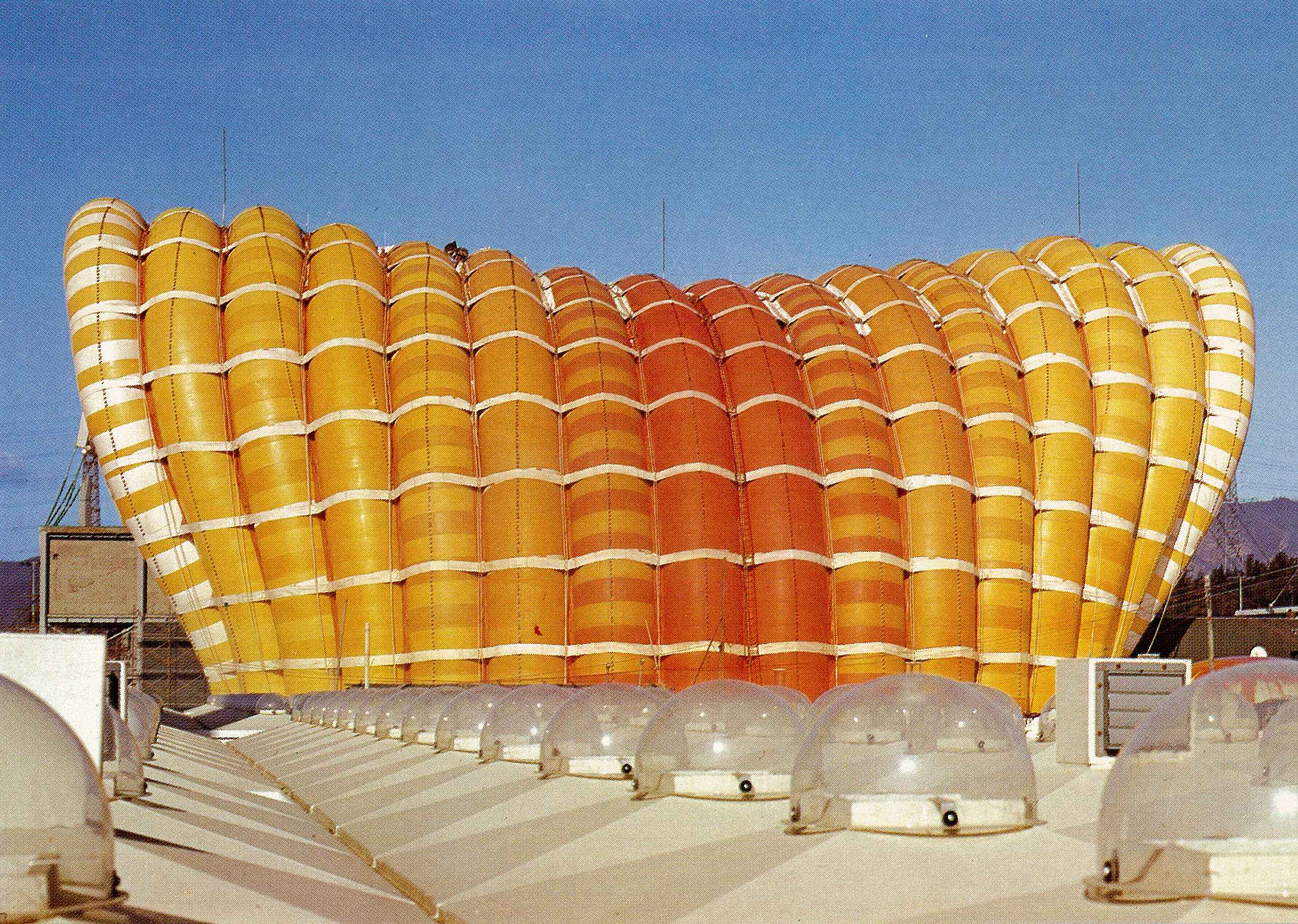In the late 1960s and early 1970s, architecture and urban planning went through a period of intense experimentation, characterized by the creation of temporary structures and the exploration of new materials and forms. Two iconic events of this period were the 1970 Osaka World Expo and the creation of Whiz Bang Quick City in 1971.
Both projects, while different in nature and scale, shared a futuristic vision and a commitment to innovation in designing temporary spaces. These ideas have endured and continue to resonate today in architectural projects like Skybubbles, where inflatable architecture redefines our interaction with the environment, blending innovation, design, and sustainability.
Osaka World Expo 1970: A Temporary City of the Future

The Osaka World Expo, held in 1970, was the first of its kind in Asia and attracted more than 64 million visitors. Under the theme “Progress and Harmony for Humanity“, the event sought to showcase the possibilities of a technological and sustainable future.
The overall design of the exposition was created by renowned Japanese architect Kenzo Tange, in collaboration with Uzo Nishiyama. Together, they conceived a design that integrated traditional elements with cutting-edge architectural innovations.

Architect Renzo Piano also contributed to the exposition, bringing his innovative approach to designing lightweight, transparent structures. His work reinforced the idea that architecture didn’t have to be static or permanent, but could flow with the needs of the environment and people.
The Osaka Expo laid the foundation for what we understand today as pneumatic and modular architecture, a philosophy that has influenced the creation of temporary event spaces, emergency shelters, and immersive experiences.
Whiz Bang Quick City 1971: An Ephemeral City of Collective Creativity
One year after the Osaka Expo, in April 1971, an architectural and social experiment known as Whiz Bang Quick City took place. Located near Woodstock, New York, this ephemeral city was built in just a few days by hundreds of students, architects, and artists.
The event was organized by Works, a collective of architects, designers, and educators seeking to explore new forms of community living and sustainable construction.

The premise of Whiz Bang Quick City was simple yet ambitious: to build shelters in 24 hours and live in them for 10 days. Structures of all kinds were erected, from cardboard domes to polyethylene inflatables, exploring self-construction, recycling, and sustainability techniques.
More than just a building experience, this ephemeral city represented a new concept of urbanism, where flexibility and experimentation were key. It became a space for collective creativity and exploring new ways of living, paving the way for future experimental architectural projects.
Innovation, Futurism, and the Concept of Space: The Connection with Skybubbles
Both the Osaka World Expo and Whiz Bang Quick City changed the way we think about temporary spaces. Both events demonstrated that cities don’t have to be fixed, immovable structures, but can adapt, transform, and become lighter, more modular, and more sustainable.
Skybubbles takes cues from the pneumatic and modular architecture of Osaka 1970 and Whiz Bang Quick City, while also reinventing these ideas for modern contexts such as:
- Immersive experiences and events: Like Osaka’s inflatable domes, Skybubbles creates environments that transform the perception of space, combining design, technology, and unique sensations.
- Flexibility and adaptability: Skybubbles structures can be installed anywhere, as in Whiz Bang Quick City, where the architecture sought functionality.
- Innovation and sustainability: In line with the principles of both temporary cities, Skybubbles uses lightweight, efficient, and sustainable materials, reducing environmental impact and promoting a new way of inhabiting the world.
Just as Osaka 1970 imagined cities of the future with inflatable architecture, today Skybubbles materializes that vision with structures that redefine our relationship with space and technology.
Conclusion: From the Past to the Future of Inflatable Architecture
The Osaka World Expo and Whiz Bang Quick City were not only iconic events of their time, but also laid the foundation for contemporary modular architecture.
What began as experimentation with inflatable domes and prefabricated structures has evolved into advanced proposals like Skybubbles, which capture the visionary spirit of these projects and apply it to modern experiences.
The ability to create innovative spaces is still a powerful and relevant concept, and brands like Skybubbles prove that the ideas from Osaka 1970 and Whiz Bang Quick City continue to evolve with each generation.
